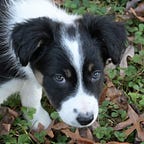What is the range of a LoRa Radio?
When I started using LoRa radios it amazed me that there was no discussion of real life range. This article will attempt to solve that by doing real walkabouts in towns and woodlands.
I plan to add more tests to this over time.
Introduction
The problem with describing range of a LoRa system is that range depends on a number of factors and so any simple summary of range will be incomplete.
In this article I’ll discuss the various things that change range and more importantly I have a very cool test system that I’ll use to make real life range measurements.
Most articles I’ve seen that discuss range set up a best case. They put a possibly directional antenna up high somewhere then see how far it will go over the ocean or some other really flat really empty area. Well, that’s not realistic and it’s not my application.
I’m concerned with how far apart two units can get and still reliably communicate in the real world.
In all of the following tests, the transmitter is set to 20dBm. It uses a dipole antenna. The receiver uses a vertical antenna with no real ground plane.
Test in Light Woods
In this test, the base unit was placed at the beginning of a trailhead. The trail starts out fairly flat then has some downward slope. Middle-aged trees are everywhere.
This picture shows the location of each point where a signal was received, along with the signal strength (which ranges from -30 to -128).
Walk through a small downtown
In this test, I walked through chapel hill in the afternoon. My car is parked on Cameron Ave. pointing west. A couple of cars are parked behind it (towards the east). The base unit is in the back of the car.
Cameron Ave. is remarkably flat for an in-town street but it goes very downhill after .7 miles so I stopped walking even though there was plenty of signal. Half way through the test the unit in the car went over-temperature (>120F).
This picture shows the location of each point where a signal was received, along with the signal strength (which ranges from -30 to -128).
Here we see that small houses aren’t particularly difficult, and large concrete buildings interfere more.
Walk through a Shopping Plaza / Parking Lot
In this test I parked at a grocery store and walked around a small residential mall and residential area. The weakest part of the signal was caused by noticeable hills.
The radio goes through the entire grocery store and surrounding stores just fine but is reduced mostly by hills.
Test in Heavy Woods
This walk was through dense vegetation and woodland in a level biological reserve. Although I walked on the trail, the signal has to go through the entire woodlands because the trail is not straight.
As you can see, when the walk starts through a moderately straight path the signal is excellent. As soon as it has to pass through the acre of woods it gets worse but the unit continues to receive data until about 0.4 miles of pretty heavy woods. The map image shows the reserve in the winter — in the summer it’s lush and green everywhere.
Here’s a view of the car, antenna, and what the woods looks like:
Appendix 1: Variables
The most important things that impact range are:
- Antenna Efficiency, Radiation Pattern, and Orientation
- Power Output
- Bandwidth
- Objects between the two antennas
Antenna Efficiency, Radiation Pattern, and Orientation
As I walk around a city or woods, the antenna in my hand is wobbling around — shaking the wire and aiming the radiation differently. Meanwhile, the source signal may be partially blocked by the car roof support, other cars, trees, …
I used a vertical dipole for the base unit because it is XY omnidirectional and spreads horizontally — it should be a good impedance match with the radio. The mobile unit is more omnidirectional and it uses a poorly tuned vertical whip that’s very portable.
Power Output
The 915MHz band restricts radiated power to about 1W (30dBm). The chip/module in the BlueLora maxes at 22dBm. For testing I run at 20dBm since it seems not overheat the chip if the antenna is disconnected — but there is 10dB of headroom available for more range (about 3x).
Bandwidth
LoRa range is, among other things, directly dependent on the bandwidth of the signal. I tend to run at 62,500 but lower bandwidths can provide another 2–4x of range — at the cost of needing a tcxo.
Objects between the antennas
In this list, only the “Objects between the two antennas” changes by location — so when we test in different location it is mainly to see how much the signal is attenuated by interferers.
The worst interferers are mountains — changes in elevation. Then come concrete buildings, then sheet-metal buildings, and then woodlands.
Appendix 2: The Test System
Hardware
- One BlueLora board with a 5" dipole antenna. This should give uniform XY coverage and limited Z coverage. This unit (the blue box) is set inside the car on the dash or in the back so it can theoretically radiate through a window.
- Another BlueLora board with a wire whip antenna (kind of omnidirectional) and a SparkFun Qwiic GPS (a uBlox SAM-M8Q) connected into the sensor port.
Software
The base unit is programmed to send a LoRa packet every 5–10 seconds. The packets are numbered and crc’ed.
The mobile unit, every time it receives a packet, stores the signal level, gps location, and count into storage. Then it updates the display with the signal level and distance from home. Home is set by clicking the button.
Upon return from the walk, the data is downloaded from the mobile unit and then heat-mapped by gps location.
